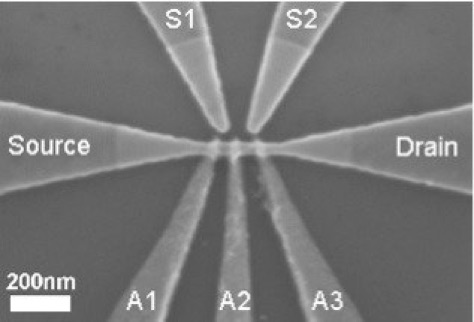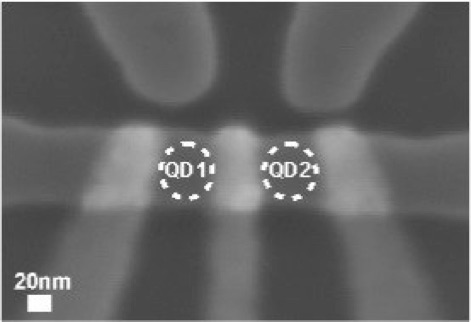Quantum Nano-Electronics & Nano-Photonics

After moving to Univ. of Southampton, I have joined the SISSQIT project headed by the Principal Investigator, Prof. H. Mizuta (Univ. of Southampton, JAIST). In this project, we are aiming to build Si based quantum information technology platform by manipulating single spin in a quantum dot as a quibit. Si is suitable for integration, and the technology will be scalable to multiple quibits. This challenging project is at the edge of the state-of-the-art physics and Si technologies. It will be related to our deeper understanding of quantum mechanics in nano-scaled devices.
Si based Integrated Single-Spin
Quantum Information Technology (SISSQIT)
The challenge is to create a “cat” with a long lifetime...
One of the practical challenge for quantum-information-processing (QIP) is to create and manipulate the entangled state with a superposition of two quantum states. Even if we uses single-spin in a quantum dot, the wavefunction of the state is spread within the dot. The typical size of the dot is around (10 nm)3, a tiny object seen in our He-ion-microscope, but about 1,000,000 times larger in volume than an atom (1 Å) 3. In other words, the wavefunction describes macroscopically distinguishable state, and the superposition of these states would correspond to make a Schödinger’s ‘cat’. In principle, we can create an entangled state, but usually, the lifetime of these states is limited. We must eliminate all possible sources of decoherence to expand the lifetime.
Single electron transistors with double dots
We are improving our device performance to observe the spin-blockage phenomena and to manipulate the spin in a Si platform.
Collaborators:
Prof. H. Mizuta (Univ. of Southampton, JAIST)
Dr. Y. Tsuchiya (Univ of Southampton)
Dr. H. M. H. Chong (Univ. of Southampton)
Dr. M. K. Husain (Univ. of Southampton)
F. M. Alkhalil (Univ. of Southampton)
Y. P. Lin (Univ. of Southampton)
Dr. D. Williams (Hitachi, Cambridge)
Dr. H. Takahashi (Hitachi, Cambridge)
We are fabricating our devices in our clean room, Southampton Nanofabrication Centre. We confirmed the clear operation of the device as a single-electron-transistor. The double quantum dots are defined by the fine Electron-Bean (EB) lithography techniques.














